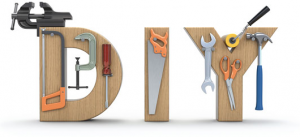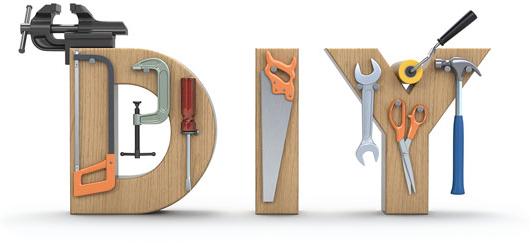How To Build A Deck Part 3
Posted on: December 9, 2015, by : deck
You are now ready to begin prepping your ledger board, and your first step will be to create the holes for your bolts (or screws). Check with your local zoning board to find out if they have any specific regulations for the location of the lag screws. Drill all of your holes with a bit that is 1/8″ larger than the screw so that you have room for adjustments, and drill in pairs – one on top of the other – every 15″. Drill your first two holes 1″ from each end of the board for proper holding then drill the others. Drilling all of the holes at once will prevent mistakes. Now temporarily attach the ledger board to your home (using nails) and using a pencil, mark each hole that you drilled into the ledger board. Remove the ledger board from the side of the house and using a drill bit that is slightly smaller than your ledger board screws, drill the holes into the house that correspond to the drill holes in the ledger board.

Using a smaller drill it allows the screws set into the side of the house better, providing a firmer support for your ledger board. Before reattaching the ledger board permanently, fill each hole that you created with silicone caulking which will prevent the holes from retaining rainwater. To prevent rotting of the wood, you will want to now place your ledger board screws into the ledger board, and using rust resistant washers, begin the process of attaching the ledger board to your home. Using the washers for ½” to ¾” from the surface of your home not only helps prevent later decay but will also assist you in leveling out uneven surfaces (shingles, siding, etc.). After you have threaded the lag screws into the ledger, installed the proper number of washers on each screw, and squirted caulk into the holes, lift the ledger into place, tap the screws into the wall, and, with a socket or crescent wrench, tighten the screws making sure that the screws are biting into the wall, especially the last 2”. You should consider applying a waterproofing compound to the ledger board, minimally the exposed ends. You may want to waterproof the entire board, especially if the deck is in an area of your home that gets little sun.
You are now ready to install the two edge joists and locate your pier holes. Deck joists, which support the decking or surface of the deck, should be installed so that they hang from the ledger board (this provides additional stability to your deck). Placing your joists so that the bowed edge (no piece of wood is ever perfectly straight) is pointing up (crowning the joist) allows the bow to settle as weather affects it. When selecting the end joists, select the two straightest ones that you have and nail them to the edges of the outer ledger board using galvanized nails. After the end is nailed to the ledger, drive a temporary 2 x 4 stake into the ground that will hold the floating end level and at a right angle to the ledger board. Your goal should be to guarantee that the two outside joists are at a right angle to the ledger board which can be done by measuring along the ledger board from the outside edge eight feet and marking it then measuring the joist at six feet. Measure between the two marks and if it measures ten feet then it truly is a right angle, if not re-adjust until it is ten feet between marks. Once you have it exact, nail some temporary cross braces from the ledger to the joists at an angle to keep the joists in place. You should now have your two outer joists level, at true right angles from the ledger board, and supported by stakes.
